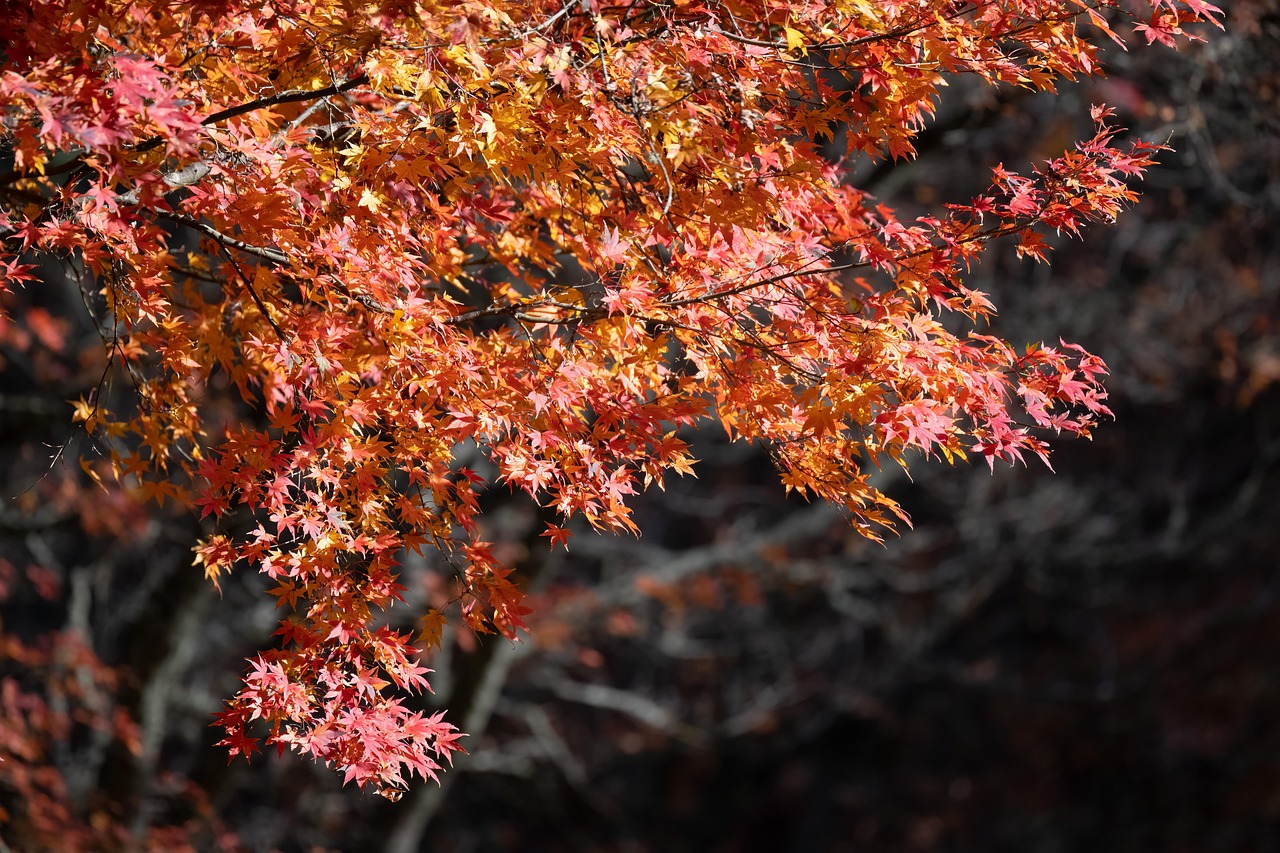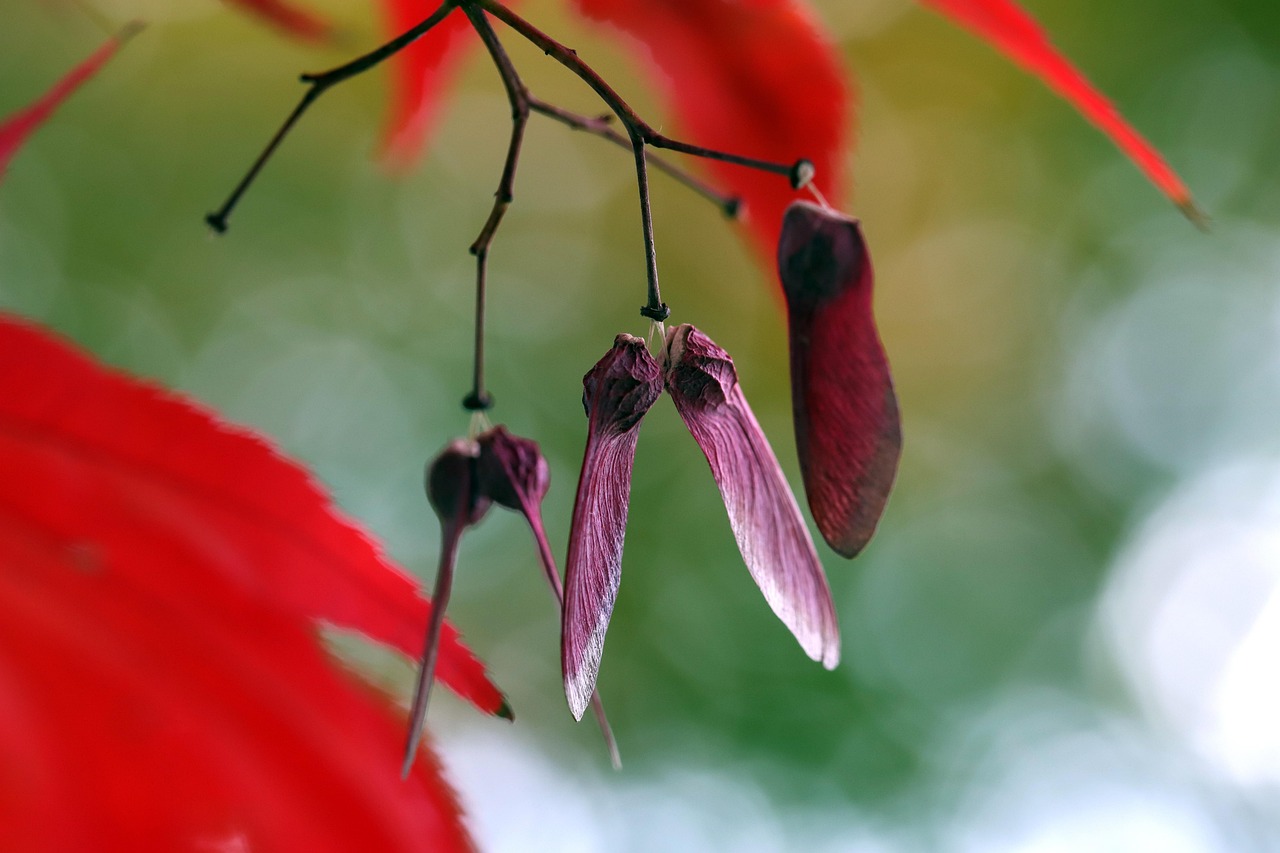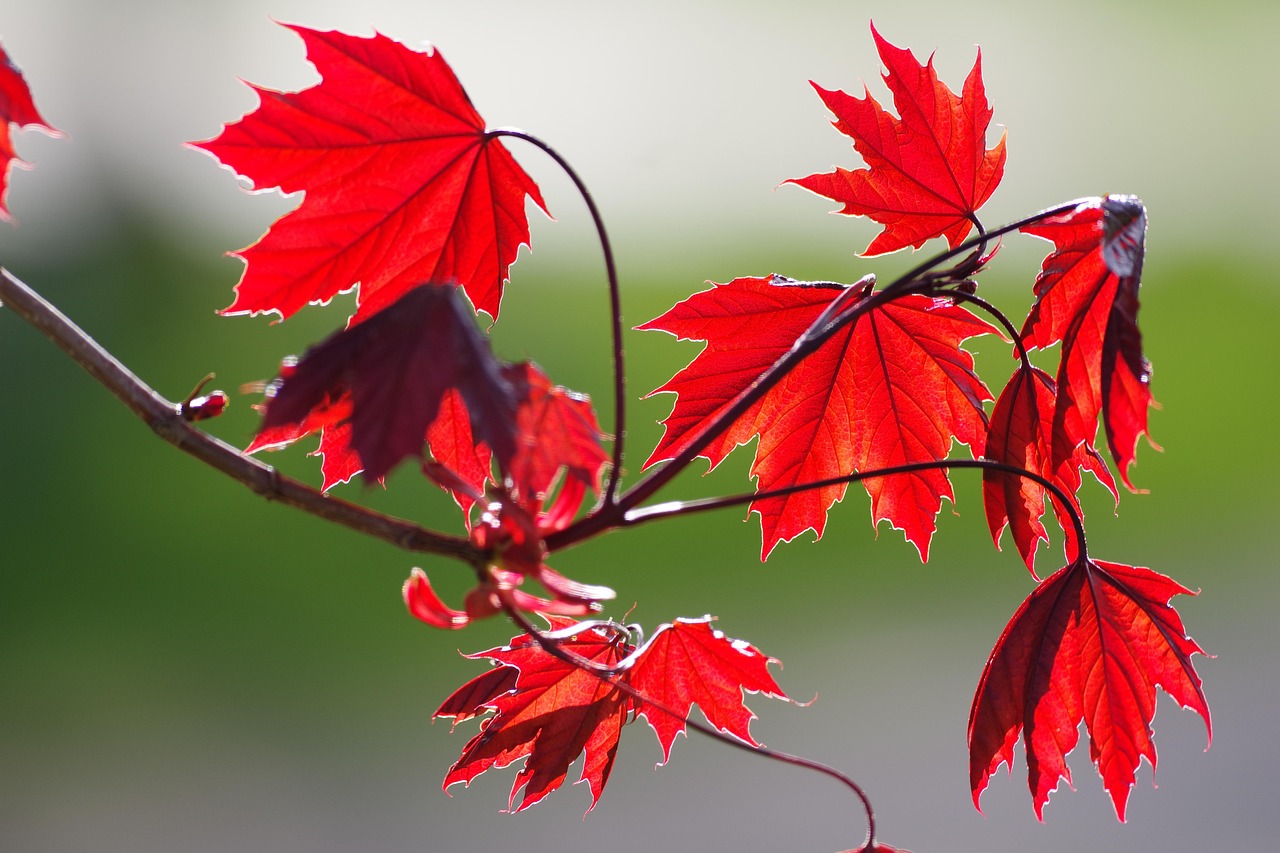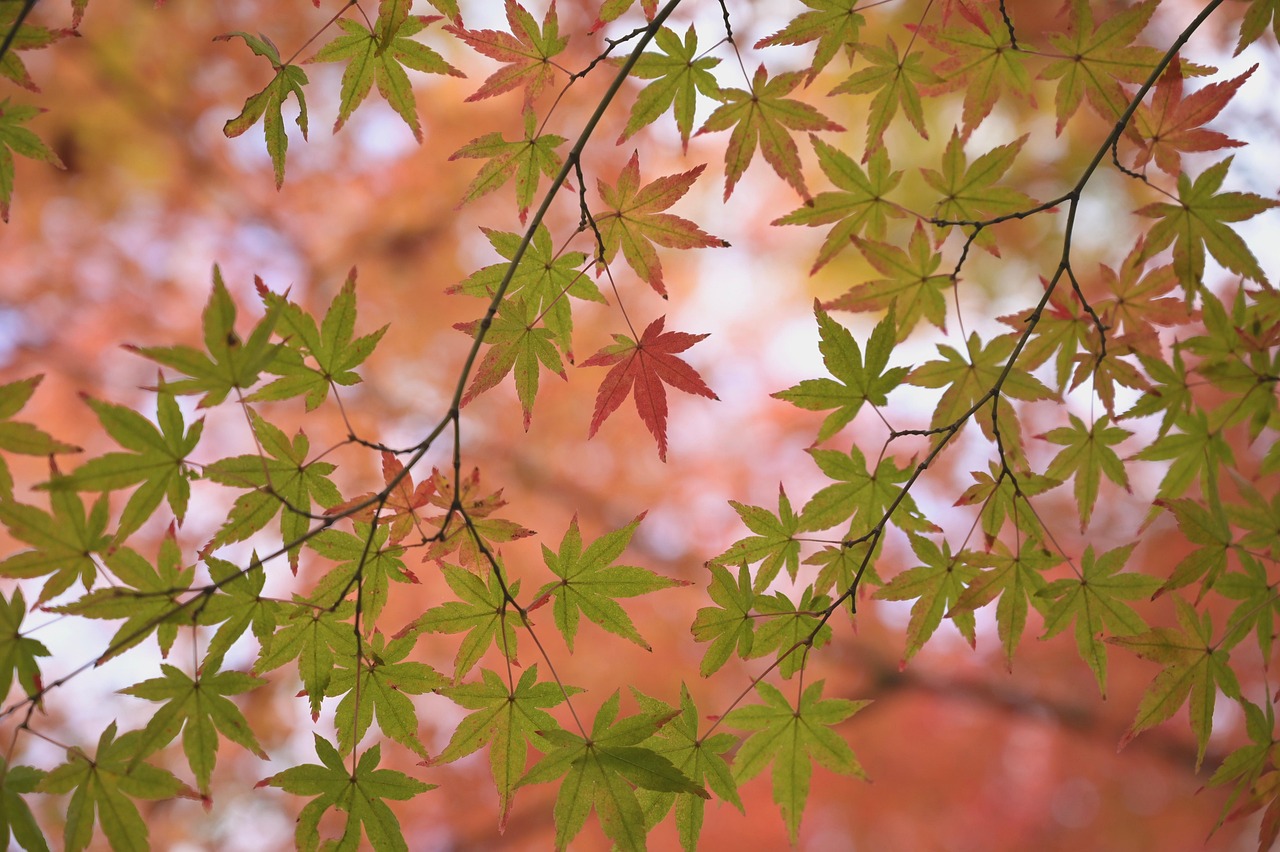Red maple trees (Acer rubrum) are not considered invasive in the traditional sense. However, they can spread rapidly in certain environments, especially in disturbed areas. Their root system is extensive, often leading to competition with native plants for resources.
Red maple trees are popular in North America for their stunning fall foliage and adaptability to various soil types. They thrive in wet environments, making them a preferred choice for landscaping near water bodies. Understanding the nature of their growth and root systems is essential for effective management and landscaping decisions.
Red maples are known for their fast growth rate. They can grow up to 60 feet tall and spread 30 to 40 feet wide. This growth potential makes them a favorable option for providing shade in yards and parks. However, it also raises concerns about their tendency to outcompete native species for light and nutrients, especially in disturbed areas.
Root System Characteristics

The root system of red maple trees is one of the most significant aspects to consider when evaluating their impact on the environment. Red maples typically develop a fibrous root system that extends laterally and vertically. This structure allows them to access water and nutrients efficiently. The following points highlight key characteristics of their root systems:
- Shallow Roots: Red maples have shallow roots that can spread extensively near the surface. This can lead to competition with other plants.
- Adventitious Roots: These trees can produce roots from the stem, allowing them to stabilize themselves in wet conditions.
- Rapid Growth: The roots grow quickly, which helps the tree establish itself in new areas swiftly.
- Soil Adaptability: They can thrive in various soil types, including sandy, loamy, and clay soils.
This adaptability contributes to their ability to colonize new areas, particularly in urban settings where soil quality may be variable. While this characteristic is beneficial for the tree itself, it can pose challenges for native flora struggling to compete for resources.
Environmental Impact
The environmental impact of red maple trees largely depends on where they are planted. In some contexts, they can enhance biodiversity by providing habitat for various wildlife species. However, they can also have negative implications if they outcompete native plants.
For instance, red maples are known to produce a significant number of seeds each year, which can disperse over large distances. This prolific seed production increases their chances of establishing new growth in a variety of environments:
| Characteristic | Details |
|---|---|
| Seed Production | Red maples can produce thousands of seeds annually. |
| Seed Dispersal | Seeds are wind-dispersed and can travel great distances. |
| Germination Rate | High germination rates contribute to rapid colonization. |
The consequences of such growth patterns can be profound. In areas where red maples invade, native plant species may experience reduced growth due to increased competition for sunlight and nutrients. This dynamic can alter local ecosystems significantly.
Management Considerations
Given their rapid growth and potential to outcompete native species, managing red maple populations is crucial in certain environments. When considering planting red maples, it is important to evaluate the existing flora and the site’s ecological balance. Here are some management strategies that can help:
- Site Assessment: Before planting, assess the existing plant community to determine if red maples will compete with native species.
- Control Measures: If red maples begin to invade an area where they are not desired, consider control measures such as selective removal or pruning.
- Monitoring Growth: Regularly monitor red maple growth and seed production to manage their spread effectively.
The presence of red maple trees in specific ecosystems can lead to both benefits and challenges. Understanding their growth patterns and root systems is vital for anyone considering planting them or managing existing populations.
Ecological Role of Red Maple Trees
Red maple trees play a significant ecological role in their native habitats. They provide essential services that benefit both wildlife and the environment. Understanding these roles can help appreciate their presence in various ecosystems.
Habitat for Wildlife
Red maples offer habitat and food for various wildlife species. Their flowers, buds, and seeds are an important food source for birds and small mammals. The tree’s foliage provides shelter and nesting sites for numerous bird species. Some key points about their role in wildlife habitats include:
- Bird Species: Many birds, such as woodpeckers and songbirds, rely on red maples for nesting and foraging.
- Mammals: Small mammals like squirrels feed on the seeds and buds, while larger animals may use the trees for shelter.
- Pollinators: The early spring flowers attract bees and other pollinators, contributing to the overall health of the ecosystem.
By supporting a diverse range of species, red maples help maintain ecological balance in forested areas and urban landscapes.
Soil and Water Management
Another critical ecological function of red maple trees is their ability to manage soil and water resources effectively. Their extensive root systems help with soil stabilization and water absorption. The following points highlight these functions:
- Soil Erosion Prevention: The shallow, fibrous roots hold soil in place, reducing erosion along riverbanks and slopes.
- Water Absorption: Red maples can absorb significant amounts of water, which helps maintain soil moisture levels.
- Nutrient Cycling: Their leaf litter contributes organic matter to the soil, enriching it with nutrients as it decomposes.
The ability of red maples to thrive in wet environments also makes them valuable for floodplain restoration projects. Their presence can help restore natural water flow patterns and enhance biodiversity in these areas.
Potential Issues with Invasive Behavior
Despite their ecological benefits, red maple trees can exhibit invasive behavior under certain conditions. This behavior poses challenges for land management and conservation efforts. Understanding these potential issues is crucial for effective decision-making.
Rapid Colonization
Red maples have a remarkable ability to colonize new areas quickly. This rapid growth can lead to dominance in specific environments, particularly where disturbances have occurred. Factors contributing to this behavior include:
- Disturbance Adaptation: Red maples often thrive in disturbed sites, such as abandoned fields or areas following logging. Their ability to establish quickly can outpace native species.
- Seed Dispersal Mechanisms: The wind-dispersed seeds allow red maples to spread over large distances, increasing their chances of colonizing suitable habitats.
- Growth Rate: Their fast growth rate means they can reach maturity faster than many native species, leading to competitive advantages.
Impact on Native Flora
The invasive tendencies of red maple trees can affect the diversity of native flora in the regions they colonize. When red maples become dominant, they can outcompete native plants for light, nutrients, and water. Some potential impacts include:
- Diminished Biodiversity: As red maples take over, native species may decline or disappear entirely, leading to reduced biodiversity.
- Altered Ecosystems: Changes in plant composition can affect other organisms that depend on native flora, disrupting food webs.
- Increased Competition: Native plants may struggle to survive in areas dominated by red maple due to competition for resources.
The consequences of these impacts emphasize the need for careful management of red maple populations in sensitive ecosystems.

Management Strategies for Red Maple Control
To mitigate the potential invasive behavior of red maple trees while still benefiting from their ecological contributions, various management strategies can be employed. These strategies aim to maintain a balance between supporting red maples and preserving native ecosystems.
Manual Removal Techniques
For small populations of red maple trees, manual removal may be an effective strategy. This method involves physically removing the trees from the area, which can be labor-intensive but beneficial for controlling growth. Key steps include:
- Identification: Identify areas where invasive red maples are prevalent.
- Cutting: Cut the trees down at ground level to prevent regrowth.
- Root Removal: For effective control, remove as much of the root system as possible.
Chemical Control Methods
In cases where manual removal is impractical, chemical treatments may be necessary. Herbicides can be utilized to manage red maple populations effectively. Important considerations include:
- Selectivity: Choose herbicides that selectively target red maples while minimizing harm to surrounding native plants.
- Application Timing: Apply treatments during the growing season when the trees are actively absorbing nutrients.
- Follow-Up Monitoring: Regularly monitor treated areas to assess regrowth and effectiveness of control measures.
Implementing these strategies can help manage red maple populations while allowing other species to thrive.
Benefits of Planting Red Maple Trees

Despite the potential challenges associated with red maple trees, there are numerous benefits to planting them in suitable environments. Their adaptability and aesthetic appeal make them a favored choice among landscapers and homeowners alike. Here are some key advantages:
Aesthetic Appeal
Red maples are renowned for their vibrant fall foliage, which ranges from yellow to deep red. This stunning display adds significant beauty to landscapes. The following aspects contribute to their aesthetic value:
- Seasonal Color Change: The dramatic change in leaf color during autumn attracts attention and enhances the visual landscape.
- Year-Round Interest: With their unique bark and growth form, red maples provide visual interest throughout the year.
- Versatile Landscaping: They can be used as focal points, street trees, or shade providers in parks and gardens.
The aesthetic appeal of red maples makes them a popular choice for urban and suburban landscaping projects, where enhancing visual beauty is a priority.
Environmental Benefits
Planting red maple trees also contributes positively to the environment. Their presence can improve air quality and support local ecosystems. Here are some environmental benefits:
- Air Quality Improvement: Like all trees, red maples absorb carbon dioxide and release oxygen, helping to improve air quality.
- Shade Provision: These trees provide shade, which can help reduce urban heat islands, leading to cooler temperatures in cities.
- Wildlife Support: As previously mentioned, red maples offer a habitat for various wildlife species, contributing to local biodiversity.
The environmental contributions of red maples highlight their importance in promoting sustainable landscaping practices.
Common Pests and Diseases Affecting Red Maple Trees
While red maple trees are generally hardy, they are susceptible to various pests and diseases that can affect their health and longevity. Understanding these threats is essential for effective management and care.
Pests
Several pests can target red maple trees, leading to potential damage. Monitoring for these pests can help ensure the health of the trees. Common pests include:
- Aphids: Small insects that suck sap from leaves, causing curling and yellowing of the foliage.
- Scale Insects: These pests attach themselves to branches and stems, extracting sap and weakening the tree over time.
- Maple Leaf Cutter Bee: This bee cuts leaves into sections for nesting, which may result in visible leaf damage.
Regular inspection of red maple trees can help identify pest problems early on, allowing for timely intervention.
Diseases
Red maples are also prone to specific diseases that can affect their growth and vitality. Some common diseases include:
- Verticillium Wilt: A soil-borne fungus that affects the vascular system of the tree, leading to wilting and yellowing of leaves.
- Leaf Spot: Various fungal infections can cause spots on leaves, affecting the tree’s overall health if severe.
- Canker Diseases: These diseases cause sunken lesions on branches and stems, weakening the tree and making it more susceptible to other issues.
Proper care, including good watering practices and maintaining tree health, can mitigate many of these diseases. Additionally, planting resistant varieties can help reduce disease incidence.
Best Practices for Planting Red Maple Trees

If you decide to plant a red maple tree, following best practices can enhance its growth and sustainability. Here are several guidelines for successful planting:
Choosing the Right Location
Selecting an appropriate site is crucial for the health of red maple trees. Consider the following factors when choosing a location:
- Soil Type: Red maples prefer well-drained soils but can adapt to various soil types. Ensure the planting site has good drainage.
- Sunlight Exposure: Aim for areas with full sun to partial shade to promote healthy growth.
- Space Considerations: Ensure there is enough space for the tree to grow both upward and outward without interference from buildings or other vegetation.
Planting Techniques
Using proper planting techniques ensures that red maple trees establish successfully. Follow these steps when planting:
- Digging the Hole: Dig a hole that is two to three times wider than the root ball but no deeper than the root ball itself.
- Soil Amendments: If necessary, amend the soil with organic matter to improve fertility and drainage.
- Watering: Water thoroughly after planting to eliminate air pockets and settle the soil around the roots.
Implementing these best practices can lead to thriving red maple trees that contribute positively to their environment.
Additional Considerations for Red Maple Management
In addition to planting techniques and management strategies, further considerations can enhance the successful integration of red maple trees into various landscapes. Addressing these aspects will help ensure that these trees remain a positive element in their environments.
Seasonal Care
Understanding the seasonal needs of red maple trees can significantly impact their health and growth. Each season presents unique care requirements:
- Spring: This is the ideal time for pruning. Remove any dead or damaged branches to promote healthy growth.
- Summer: Monitor for pests and diseases, and ensure adequate watering, especially during dry spells. Mulching around the base can help retain moisture.
- Fall: After the leaves drop, clean up fallen foliage to prevent disease buildup and inspect for any signs of pests or diseases.
- Winter: Protect young trees from extreme cold and frost by wrapping the trunk or using burlap barriers.
Community Involvement
Engaging with the local community regarding red maple tree planting and management can have positive effects. Community involvement can foster greater awareness and support for sustainable practices. Consider the following approaches:
- Education Programs: Organizing workshops or seminars on the benefits and management of red maples can empower residents to make informed decisions.
- Volunteer Planting Days: Coordinate community events to plant and care for red maples in public spaces, enhancing local green areas.
- Collaboration with Local Organizations: Partner with environmental organizations to promote biodiversity and educate on native plant preservation.
Community engagement not only enhances the ecological landscape but also fosters a sense of pride and ownership among residents.
Final Thoughts
The discussion surrounding red maple trees highlights their dual nature as both beneficial and potentially invasive species. While they offer significant aesthetic and ecological benefits, it is essential to manage their growth effectively to protect native flora. Understanding their root systems, growth patterns, and environmental roles allows for informed decisions when planting and managing these trees.
Implementing best practices for planting, seasonal care, and community involvement can lead to thriving red maple populations that enhance landscapes without compromising local ecosystems. By carefully considering their impact, we can enjoy the beauty and benefits of red maples while safeguarding our natural heritage.
Ultimately, the key to successfully integrating red maple trees into our environments lies in balance. With proper management strategies, these trees can coexist with native species, contributing to biodiversity and creating vibrant landscapes for future generations to enjoy.
